Brachial plexus or Plexus Brachialis is formed by the conjunction of somatic nerves involving the anterior or ventral roots (rami) of the four end cervical regions and the first thoracic portion vertebrae (C5, C6, C7, C, 8, and T1). The network of nerves travels from the spinal cord to the initial ribs and covers both the armpits via the cervicoaxillary canal (neck). Any injury to the conjunction may cause tremendous pain in the shoulder region, neck, and arms.
Brachial plexus injuries are mostly caused due to any traumatic or accidental damage resulting from sudden and excessive jerk to the shoulder which eventually strains the nerves. In severe cases, the nerves may also get torn apart which requires thorough medical attention and surgical treatments.
Besides being prescribed within killers, the treatments for minor injuries may range from physiotherapy to regular exercise. To reduce the pain and prevent the condition from worsening, one must refrain from heavy physical activities and outdoor sports. Besides, the surgical treatments required for the same are:
The three procedures involve transferring of nerve or a patch of thin muscle from a different, healthy portion to the damaged brachial nerves in order to re-establish the connection in the position.
Stereotactic procedures involve 3D coordinating procedures, in order to track down the area of damage and perform necessary functions. With a minimum invasion, the procedure allows performing biopsy, radiosurgery, ablation, etc. Ideal candidates for the same are candidates who:
Brachial plexus injuries/stereotactic procedures cost may vary as per the requirement and usually begins from $7500. However, the deciding factors which may result in variation are:
Treatment cost
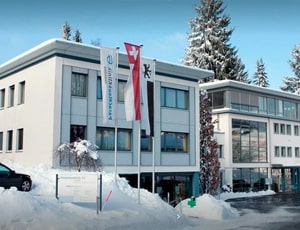
Apart from in-detail treatment procedures available, Paracelsus Clinic located in Lustmuhle, Switzerland has a wide variety of facilities available for International Patients. Some of the facilities which are provided by them are Accommodation, Airport Transfer, Choice of Meals, Interpreter, SIM, TV inside room. Also listed below are some of the most prominent infrastructural details:

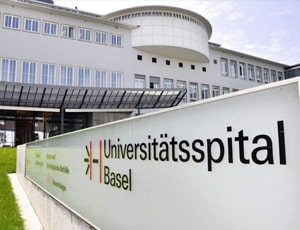
University Hospital located in Basel, Switzerland is accredited by ISO. Also listed below are some of the most prominent infrastructural details:
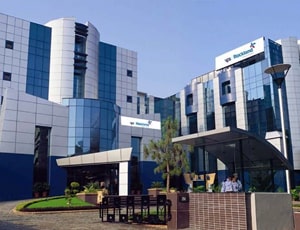
Types of Brachial Plexus Injuries/Stereotactic Procedures in Medeor Hospital and its associated cost
| Treatment Option | Approximate Cost Range (USD) | Approximate Cost Range (INR) |
|---|---|---|
| Overall Brachial Plexus Surgery | 5054 - 8128 | 416885 - 667467 |
| Nerve Decompression Surgery | 3042 - 6583 | 250621 - 541519 |
| Nerve Grafting Surgery | 5071 - 8750 | 415391 - 718020 |
| Nerve Transfer Surgery | 7114 - 9148 | 582683 - 752465 |
| Free Muscle Transfer Surgery | 8129 - 10197 | 663348 - 832378 |
| Tendon Transfer Surgery | 5073 - 8664 | 414299 - 705391 |
| Nerve Repair Surgery | 3042 - 10166 | 249337 - 829530 |
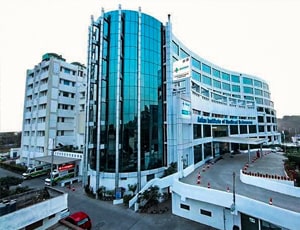
Types of Brachial Plexus Injuries/Stereotactic Procedures in Asian Institute of Medical Sciences and its associated cost
| Treatment Option | Approximate Cost Range (USD) | Approximate Cost Range (INR) |
|---|---|---|
| Overall Brachial Plexus Surgery | 5093 - 8139 | 414651 - 664056 |
| Nerve Decompression Surgery | 3057 - 6622 | 250657 - 543466 |
| Nerve Grafting Surgery | 5088 - 8754 | 416205 - 717874 |
| Nerve Transfer Surgery | 7112 - 9160 | 582976 - 752008 |
| Free Muscle Transfer Surgery | 8099 - 10125 | 664098 - 835849 |
| Tendon Transfer Surgery | 5067 - 8634 | 415127 - 704774 |
| Nerve Repair Surgery | 3056 - 10106 | 250071 - 835827 |
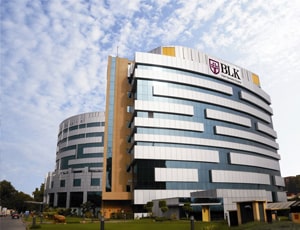
BLK-Max Super Speciality Hospital located in New Delhi, India is accredited by NABL. Also listed below are some of the most prominent infrastructural details:
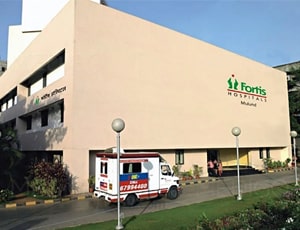
Types of Brachial Plexus Injuries/Stereotactic Procedures in Fortis Hospital, Mulund and its associated cost
| Treatment Option | Approximate Cost Range (USD) | Approximate Cost Range (INR) |
|---|---|---|
| Overall Brachial Plexus Surgery | 5721 - 8910 | 464003 - 722007 |
| Nerve Decompression Surgery | 3325 - 7351 | 275557 - 598503 |
| Nerve Grafting Surgery | 5626 - 9611 | 466010 - 804717 |
| Nerve Transfer Surgery | 7711 - 10166 | 636998 - 822184 |
| Free Muscle Transfer Surgery | 9001 - 11194 | 739585 - 930788 |
| Tendon Transfer Surgery | 5722 - 9566 | 455013 - 793047 |
| Nerve Repair Surgery | 3302 - 11425 | 279815 - 919105 |
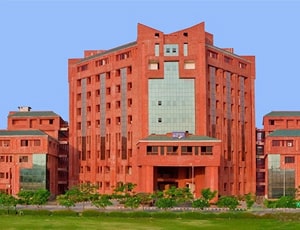
Types of Brachial Plexus Injuries/Stereotactic Procedures in Sharda Hospital and its associated cost
| Treatment Option | Approximate Cost Range (USD) | Approximate Cost Range (INR) |
|---|---|---|
| Overall Brachial Plexus Surgery | 4708 - 7410 | 383867 - 606008 |
| Nerve Decompression Surgery | 2828 - 6065 | 233128 - 500157 |
| Nerve Grafting Surgery | 4707 - 8134 | 389377 - 668292 |
| Nerve Transfer Surgery | 6626 - 8332 | 533537 - 683528 |
| Free Muscle Transfer Surgery | 7560 - 9471 | 607028 - 764877 |
| Tendon Transfer Surgery | 4675 - 8017 | 378504 - 642196 |
| Nerve Repair Surgery | 2797 - 9373 | 231094 - 768154 |
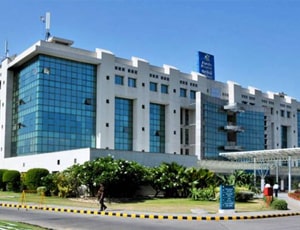
Types of Brachial Plexus Injuries/Stereotactic Procedures in Apollo Hospital International Limited and its associated cost
| Treatment Option | Approximate Cost Range (USD) | Approximate Cost Range (INR) |
|---|---|---|
| Overall Brachial Plexus Surgery | 5096 - 8081 | 417696 - 663166 |
| Nerve Decompression Surgery | 3043 - 6584 | 250629 - 539025 |
| Nerve Grafting Surgery | 5098 - 8713 | 414382 - 715492 |
| Nerve Transfer Surgery | 7094 - 9133 | 580939 - 746227 |
| Free Muscle Transfer Surgery | 8082 - 10167 | 665241 - 830961 |
| Tendon Transfer Surgery | 5084 - 8630 | 416568 - 704499 |
| Nerve Repair Surgery | 3052 - 10145 | 249972 - 836286 |
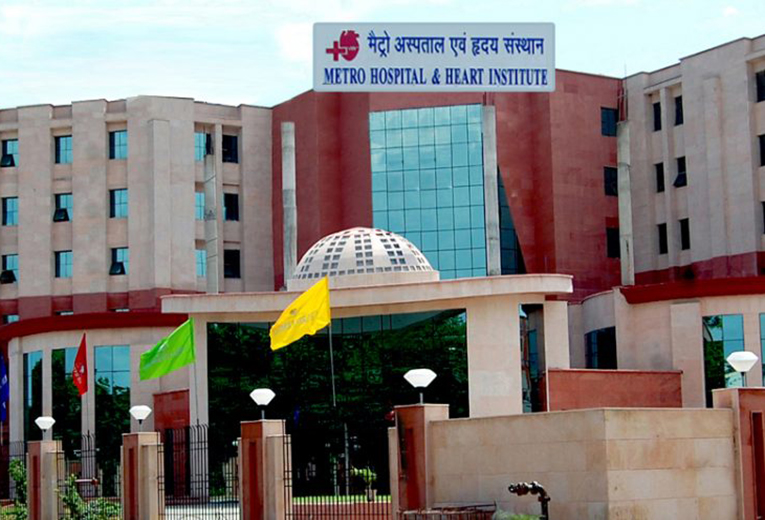
Types of Brachial Plexus Injuries/Stereotactic Procedures in Metro Hospital and its associated cost
| Treatment Option | Approximate Cost Range (USD) | Approximate Cost Range (INR) |
|---|---|---|
| Overall Brachial Plexus Surgery | 4601 - 7578 | 382040 - 608432 |
| Nerve Decompression Surgery | 2837 - 6169 | 230993 - 503085 |
| Nerve Grafting Surgery | 4748 - 7962 | 378429 - 658079 |
| Nerve Transfer Surgery | 6484 - 8455 | 535283 - 683660 |
| Free Muscle Transfer Surgery | 7568 - 9209 | 618409 - 771438 |
| Tendon Transfer Surgery | 4684 - 8062 | 387948 - 642821 |
| Nerve Repair Surgery | 2832 - 9264 | 230947 - 767702 |

Dr. Rose Private Hospital located in Budapest, Hungary is accredited by JCI. Also listed below are some of the most prominent infrastructural details:
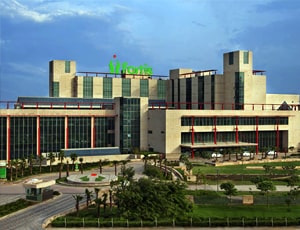
Fortis Memorial Research Institute located in Gurugram, India is accredited by JCI, NABH. Also listed below are some of the most prominent infrastructural details:
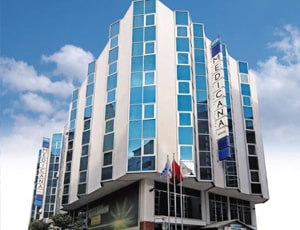
Types of Brachial Plexus Injuries/Stereotactic Procedures in Medicana Avcilar and its associated cost
| Treatment Option | Approximate Cost Range (USD) | Approximate Cost Range (TRY) |
|---|---|---|
| Overall Brachial Plexus Surgery | 8037 - 11274 | 240660 - 340428 |
| Nerve Decompression Surgery | 2214 - 5530 | 67440 - 170414 |
| Nerve Grafting Surgery | 3321 - 6729 | 99779 - 202634 |
| Nerve Transfer Surgery | 5676 - 8987 | 172168 - 272605 |
| Free Muscle Transfer Surgery | 7892 - 11106 | 237415 - 333528 |
| Tendon Transfer Surgery | 3448 - 8011 | 103510 - 232082 |
| Nerve Repair Surgery | 2253 - 5681 | 67680 - 173007 |
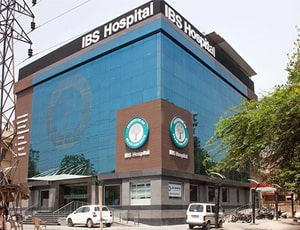
Types of Brachial Plexus Injuries/Stereotactic Procedures in IBS Hospital and its associated cost
| Treatment Option | Approximate Cost Range (USD) | Approximate Cost Range (INR) |
|---|---|---|
| Overall Brachial Plexus Surgery | 5086 - 8105 | 415209 - 667657 |
| Nerve Decompression Surgery | 3047 - 6606 | 250912 - 542535 |
| Nerve Grafting Surgery | 5096 - 8731 | 415054 - 718309 |
| Nerve Transfer Surgery | 7104 - 9095 | 580609 - 748131 |
| Free Muscle Transfer Surgery | 8122 - 10132 | 668764 - 829460 |
| Tendon Transfer Surgery | 5089 - 8658 | 415747 - 706007 |
| Nerve Repair Surgery | 3033 - 10161 | 250708 - 831694 |
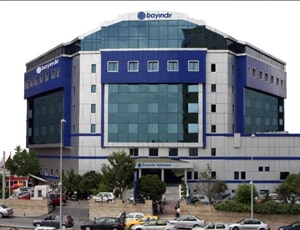
Types of Brachial Plexus Injuries/Stereotactic Procedures in Bayindir Healthcare Group and its associated cost
| Treatment Option | Approximate Cost Range (USD) | Approximate Cost Range (TRY) |
|---|---|---|
| Overall Brachial Plexus Surgery | 7851 - 11484 | 237044 - 345502 |
| Nerve Decompression Surgery | 2220 - 5701 | 66939 - 169310 |
| Nerve Grafting Surgery | 3364 - 6729 | 101357 - 203972 |
| Nerve Transfer Surgery | 5570 - 8982 | 166458 - 275528 |
| Free Muscle Transfer Surgery | 8014 - 11259 | 234150 - 345996 |
| Tendon Transfer Surgery | 3373 - 7971 | 100654 - 240565 |
| Nerve Repair Surgery | 2210 - 5677 | 68197 - 167091 |
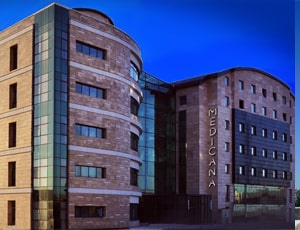
Types of Brachial Plexus Injuries/Stereotactic Procedures in Medicana Sivas Hospital and its associated cost
| Treatment Option | Approximate Cost Range (USD) | Approximate Cost Range (TRY) |
|---|---|---|
| Overall Brachial Plexus Surgery | 7947 - 11062 | 240949 - 333483 |
| Nerve Decompression Surgery | 2268 - 5697 | 67709 - 171399 |
| Nerve Grafting Surgery | 3434 - 6682 | 103128 - 206135 |
| Nerve Transfer Surgery | 5698 - 9032 | 169763 - 266244 |
| Free Muscle Transfer Surgery | 7847 - 11422 | 241667 - 345241 |
| Tendon Transfer Surgery | 3413 - 7978 | 101477 - 236503 |
| Nerve Repair Surgery | 2237 - 5708 | 66678 - 169002 |
Brachial plexus injury is a medical emergency caused due to an injury to the brachial plexus group of nerves that sends signals from your spine to your shoulder, arm, and hand. These nerves control and administer feelings in the muscles of the shoulder, elbow, wrist, hand, and arm. This damage is also known as brachial plexopathy. Brachial plexus injury appears when these nerves are compressed, stretched, or in the most serious case, ripped apart from the spinal cord. Some brachial plexus injuries known as stingers or burners are inconsequential and will completely recover in a few weeks. However, other brachial plexus injuries are severe enough and may cause some permanent impairment in the arm. In severe conditions, it can paralyze your arm, with a failure of function and sensation.
Brachial plexus injury results when the brachial nerves are damaged by excessive stretching, pressure, or cutting. Stretching can occur when your shoulder is forced down while your neck stretches up and away from the injured shoulder such as during a motorcycle or a car accident. In case of a serious injury, the brachial nerve may rip off the spinal cord in the neck. This type of brachial plexus injury is classified as a traumatic brachial plexus injury. It may occur because of different reasons, including:
Brachial plexopathy may also result from exposure to radiation at the time of stereotactic radiosurgery or specific procedures such as stereotactic breast biopsy.
Symptoms of the brachial plexus injury depend on the seriousness of the injury. A minor injury can often occur during any contact sport and minor trauma when the brachial plexus nerves get stretched or compressed. Minor brachial plexus injury symptoms include the following:
More serious brachial plexus injury symptoms result when nerves are torn or ruptured. Such injuries may produce the following symptoms:
In case of childbirth brachial plexus injury, symptoms can be seen right after the birth of the child. These may include:
Some common types of surgical brachial plexus injury treatment include the following:
It is very hard to assess an exact recovery time after brachial plexus injury treatment due to the broad spectrum. How likely a spontaneous recovery depends on the type and severity of the injury.
In the case of surgery, nerve tissue grows very slowly, about an inch a month, so it can take a few years to assess the success of brachial plexus injury surgery. However, during the recovery period, patients are encouraged to keep their joints flexible by following an exercise schedule. The success rate of surgery is quite good but recovery time and success rate must be assessed on an individual basis.
Ask your healthcare adviser for the best multiple options and choose the one that meets your expectations
The Brachial Plexus Injuries/Stereotactic Procedures package cost in Switzerland varies from one hospital to another and may offer different benefits. The top hospitals for Brachial Plexus Injuries/Stereotactic Procedures in Switzerland covers all the expenses related to the pre-surgery investigations of the candidate. The comprehensive Brachial Plexus Injuries/Stereotactic Procedures package cost includes the cost of investigations, surgery, medicines and consumables. Stay outside the package duration, post-operative complications and diagnosis of a new condition may further increase the Brachial Plexus Injuries/Stereotactic Procedures cost in Switzerland.
There are many hospitals across the country that offer Brachial Plexus Injuries/Stereotactic Procedures to international patients. Some of the best hospitals for Brachial Plexus Injuries/Stereotactic Procedures in Switzerland include the following:
While the speed of recovery may vary from patient to patient, they are still required to stay for about 18 days after discharge. During this time, the patient undergoes medical tests and consultations. this is to ensure that the treatment was successful and the patient us safe to return.
Apart from the cost of Brachial Plexus Injuries/Stereotactic Procedures, the patient is also required to pay additionally for daily meals and guest house accommodation. The per day cost in this case may start from USD 50 per person.
Some of the best cities in Switzerland which offer Brachial Plexus Injuries/Stereotactic Procedures are:
The patient is supposed to stay at the hospital for about 3 days after Brachial Plexus Injuries/Stereotactic Procedures for monitoring and care. This phase is important to ensure that the patient is recovering well and is clinically stable. During this time, several tests are performed before the patient is deemed suitable for discharge.
There are more than 2 hospitals that offer Brachial Plexus Injuries/Stereotactic Procedures in Switzerland. The above mentioned clinics have the required infrastructure and a dedicated unit where patients can be treated. Also, these hospitals follow the necessary guidelines as required by the medical associations for the treatment of Brachial Plexus Injuries/Stereotactic Procedures patients.
Some of the most sought after doctors for Brachial Plexus Injuries/Stereotactic Procedures in Switzerland are: